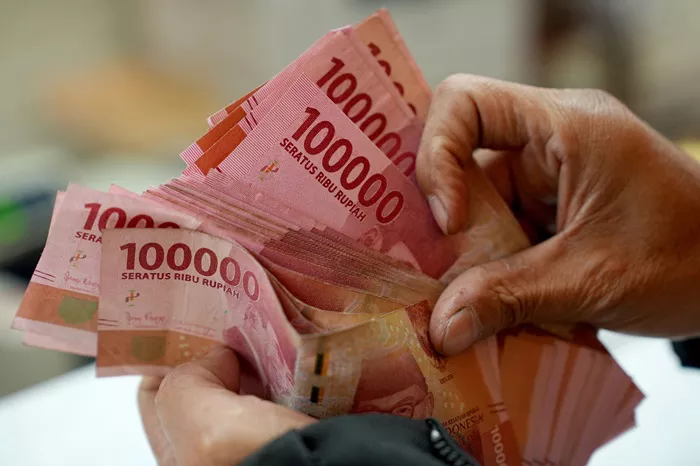The exchange rate between the Australian Dollar (AUD) and the Indonesian Rupiah (IDR) reflects the value of one currency in terms of the other. This rate is crucial for businesses, travelers, and investors who deal with transactions or investments in these currencies. This detailed article explores the factors influencing the exchange rate, its impact on various sectors, and how to navigate currency conversion effectively.
1. Overview of the Australian Dollar and Indonesian Rupiah
Australian Dollar (AUD)
The Australian Dollar is the official currency of Australia, as well as several Pacific Island nations. It is represented by the symbol A$ or AU$ and is divided into 100 cents. The AUD is considered a major currency in the global financial market, known for its stability and relatively high interest rates compared to other developed countries.
Indonesian Rupiah (IDR)
The Indonesian Rupiah is the official currency of Indonesia, represented by the symbol Rp. It is subdivided into 100 sen, though sen coins are rarely used. The IDR is considered a developing market currency and reflects the economic conditions and stability of Indonesia.
2. Current Exchange Rate: 1 AUD to Indonesian Rupiah
As of today, 1 Australian Dollar is approximately 10,445 Indonesian Rupiah. This exchange rate is subject to change based on various economic and geopolitical factors. The rate can fluctuate daily due to market dynamics, affecting how much one currency is worth in terms of the other.
3. Factors Influencing the Exchange Rate
Several factors influence the exchange rate between the AUD and IDR:
Economic Indicators
Economic indicators such as GDP growth, inflation rates, and unemployment rates in both Australia and Indonesia play a significant role in determining exchange rates. Strong economic performance in one country can increase the value of its currency relative to others.
Interest Rates
Central banks in both countries set interest rates that can impact the value of their respective currencies. Higher interest rates in Australia may attract foreign investment, increasing the demand for AUD and raising its value against the IDR.
Political Stability
Political stability and government policies in Australia and Indonesia influence investor confidence and currency values. Political unrest or uncertainty can lead to currency depreciation or volatility.
Trade Balance
The trade balance between Australia and Indonesia, including exports and imports, affects the exchange rate. A trade surplus for one country can lead to an appreciation of its currency, while a trade deficit can weaken it.
Global Market Sentiment
Global economic trends and investor sentiment can impact currency exchange rates. Changes in commodity prices, global trade policies, and economic crises can influence the AUD/IDR exchange rate.
See also: How Much Is 1 AUD To Naira?
4. Impact of Exchange Rate Fluctuations
Businesses
For businesses engaged in trade between Australia and Indonesia, fluctuations in the exchange rate can impact profitability. Companies must manage currency risk through hedging strategies to mitigate the effects of rate changes on their financial performance.
Travelers
Travelers between Australia and Indonesia are directly affected by exchange rate fluctuations. A weaker AUD means that travelers may receive fewer IDR for their money, impacting their purchasing power abroad.
Investors
Investors with holdings or investments in either Australia or Indonesia must consider exchange rate movements. Currency fluctuations can affect the value of investments and returns.
5. Navigating Currency Conversion
Currency Conversion Services
When converting AUD to IDR, individuals and businesses can use various services, including banks, currency exchange offices, and online converters. It’s important to compare rates and fees to obtain the best value.
Online Tools
Several online tools and currency converters provide real-time exchange rate information. Websites and apps offer up-to-date rates and allow users to calculate conversions easily.
Hedging Strategies
Businesses involved in international trade may use hedging strategies to protect against unfavorable currency movements. Forward contracts and options are common tools for managing exchange rate risk.
See also: What Is 1 Australian Dollar In USD Dollar?
6. Historical Trends and Future Outlook
Historical Trends
Examining historical exchange rate trends between AUD and IDR can provide insights into past fluctuations and patterns. Historical data helps understand long-term trends and the impact of significant events on currency values.
Future Outlook
Predicting future exchange rate movements involves analyzing economic forecasts, geopolitical developments, and market trends. Analysts use various models and indicators to estimate potential future rates.
Conclusion
The exchange rate between AUD and the Indonesian Rupiah is influenced by a complex interplay of economic, political, and market factors. Understanding these dynamics helps businesses, travelers, and investors make informed decisions and manage their currency-related activities effectively. Regularly checking exchange rates and using appropriate tools and strategies can help navigate the impact of currency fluctuations on financial outcomes.
Related Topics:

